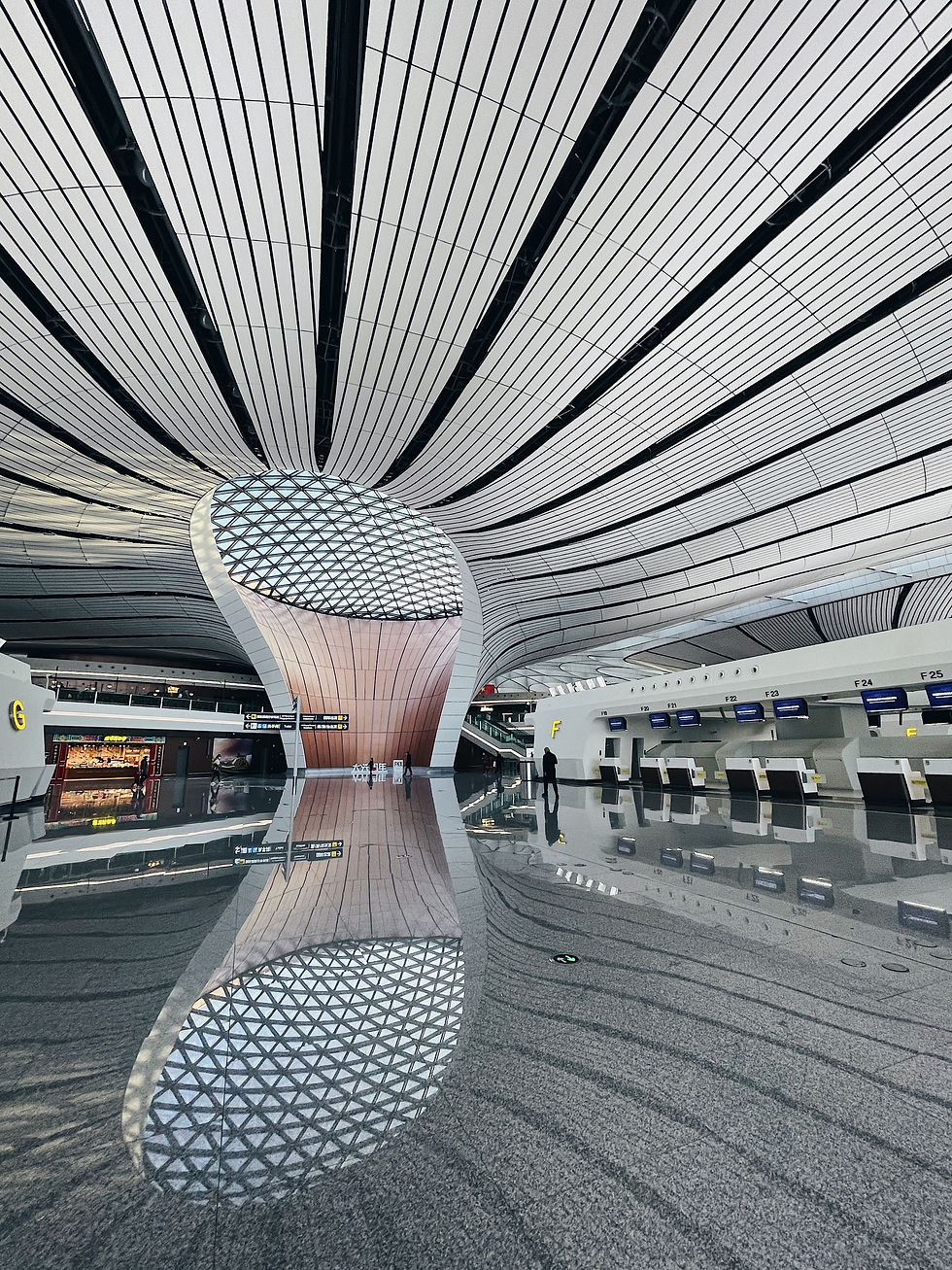Sustainable Airport Architecture: Reducing Carbon Footprints and Energy Consumption
- Gebler Tooth Architects

- Sep 26, 2023
- 3 min read
Airports are vital hubs of global connectivity, facilitating travel and trade across the world. However, their significant energy consumption and environmental impact have raised concerns about sustainability.

In recent years, there has been a growing trend in airport architecture to incorporate sustainable practices and design strategies that reduce carbon footprints and energy consumption. This blog post explores the innovative ways in which airports are embracing sustainability and contributing to a greener future.
Energy-Efficient Lighting

One of the most straightforward yet effective ways airports are reducing their carbon footprint is by transitioning to energy-efficient lighting systems. Traditional incandescent bulbs are being replaced with LED lights, which consume significantly less energy, have a longer lifespan, and emit less heat. These lighting upgrades not only reduce energy costs but also enhance the overall passenger experience by creating a well-lit and inviting environment.
Solar Power Integration
Many airports are harnessing the power of the sun by integrating solar panels into their infrastructure. Solar arrays on terminal roofs and parking garages generate clean, renewable energy, helping airports reduce their reliance on fossil fuels. Excess energy can even be stored for use during peak demand periods or fed back into the grid, further promoting sustainability.
Green Building Materials

The use of sustainable, eco-friendly building materials is on the rise in airport construction. Architects are opting for recycled, locally sourced, and low-impact materials to reduce the environmental footprint of new structures and renovations. Additionally, green building certifications, such as LEED (Leadership in Energy and Environmental Design), are being pursued to ensure airports meet strict sustainability standards.
Efficient HVAC Systems
Airport terminals are often vast, requiring robust heating, ventilation, and air conditioning (HVAC) systems. To improve energy efficiency, airports are implementing advanced HVAC systems that regulate temperature and air quality more effectively. Additionally, smart building technologies help optimise energy usage by adjusting HVAC settings based on occupancy and external weather conditions.
Sustainable Transportation Options

Airports are promoting sustainable transportation options both within and outside their premises. Many have introduced electric vehicle (EV) charging stations and have incorporated EVs into their ground fleets. Moreover, airports are increasingly connected to public transit networks, making it easier for passengers to reach the airport via eco-friendly means.
Waste Reduction and Recycling
Efforts to reduce waste and promote recycling are becoming standard practice at airports. Waste diversion programs aim to minimise landfill contributions by recycling, composting, and repurposing materials. Additionally, sustainable airport design includes easily accessible recycling bins and waste separation facilities for travellers.
Biodiversity and Green Spaces
Some airports are creating green spaces and wildlife habitats within their premises. These green areas not only enhance the aesthetic appeal of the airport but also contribute to biodiversity conservation. Native plants and sustainable landscaping practices further reduce water consumption and support local ecosystems.

In conclusion, sustainable airport architecture is no longer a mere aspiration; it's a necessity in today's world. Airports are embracing innovative solutions to reduce their carbon footprints and energy consumption. By incorporating energy-efficient lighting, solar power, green building materials, efficient HVAC systems, sustainable transportation options, waste reduction measures, and green spaces, airports are playing a pivotal role in the global effort to combat climate change.
As passengers and stakeholders increasingly prioritise environmental responsibility, sustainable airport design will continue to evolve, fostering a more sustainable and eco-conscious aviation industry for future generations. These efforts not only benefit the environment but also contribute to the overall well-being of travellers and local communities.



Comments